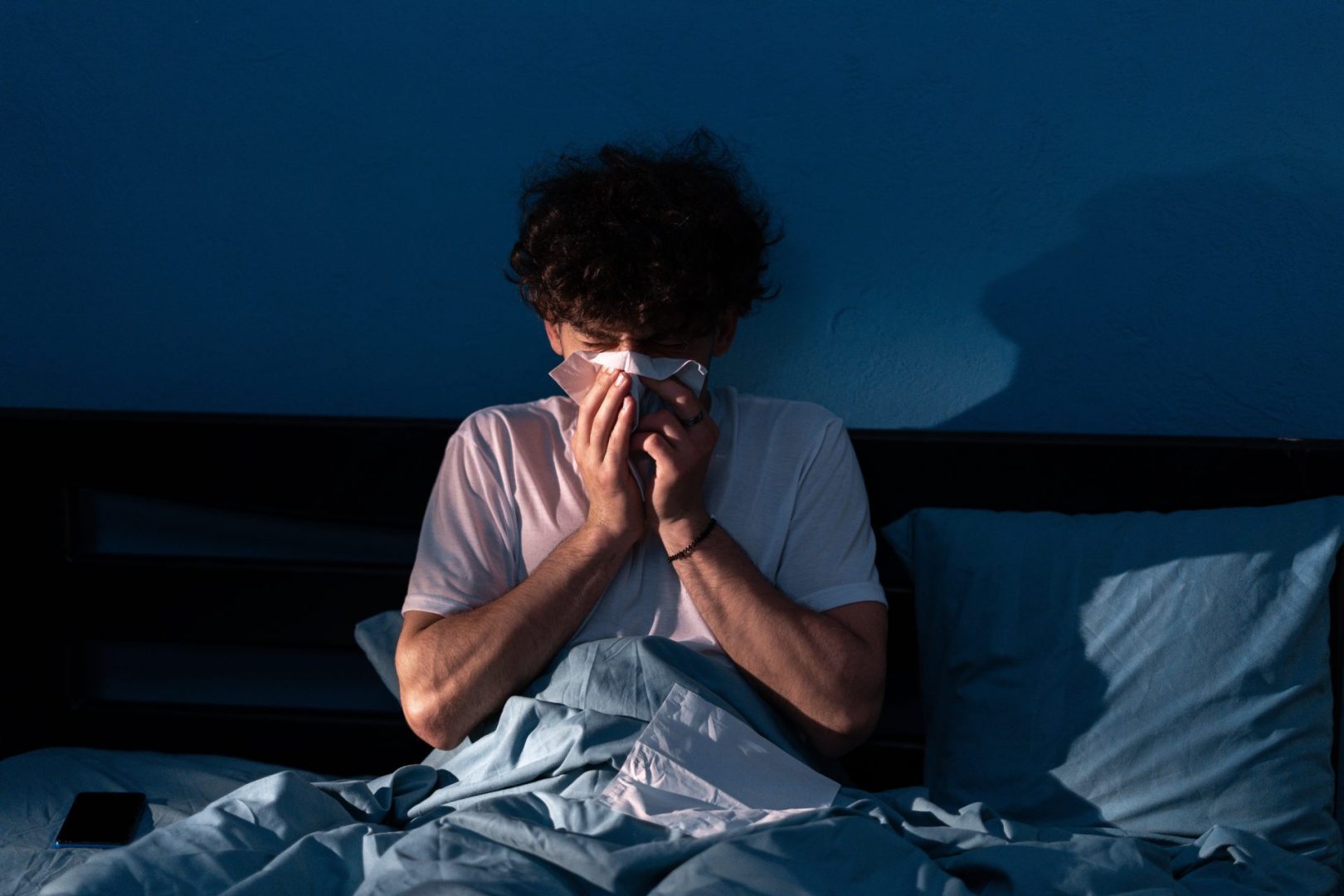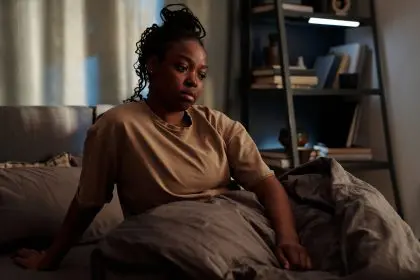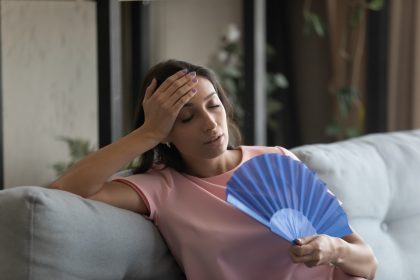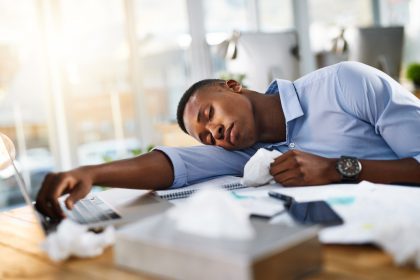That persistent sneezing, congestion, and itchy eyes might be more than just a daytime nuisance. For many allergy sufferers, symptoms intensify when the lights go out, turning what should be restful sleep into hours of discomfort. This nighttime amplification of allergies isn’t just inconvenient—it can significantly impact your health and daily functioning through sleep deprivation.
The bedroom allergen battleground
Your sleeping environment often harbors numerous allergy triggers that you might not encounter as intensely during the day. Indoor allergens tend to accumulate in bedrooms, where we spend approximately one-third of our lives. Dust mites thrive in mattresses, pillows, and bedding, while mold can develop in older homes or areas with moisture issues, especially in bedrooms with attached bathrooms or in humid climates.
How your sleeping position makes allergies worse
The simple act of lying down can transform manageable allergy symptoms into nighttime misery. When you recline, gravity works against you, causing mucus to accumulate in your throat rather than draining normally. This positional change often triggers coughing fits, wheezing, and breathing difficulties that might not trouble you during daytime hours when you’re upright.
For those with post-nasal drip, the horizontal position can lead to an irritating cough just as you’re trying to fall asleep. The mucus drainage down your throat creates a tickling sensation that often worsens when you first lie down, potentially disrupting those crucial initial moments of sleep.
Hidden pollen hitchhikers
Even if you’ve been careful to stay indoors during peak pollen seasons, invisible pollen particles may still be causing your nighttime reactions. Pollen clings tenaciously to clothing, hair, and skin, hitching rides into your bedroom despite your best efforts. This phenomenon explains why some people experience heightened symptoms after spending the day outdoors, only to suffer the consequences when they retire for the night.
Your evening shower routine might be inadvertently contributing to the problem if you’re washing your hair in the morning rather than before bed. Hair acts like a pollen magnet throughout the day, and without evening cleansing, you’re essentially pressing your pollen-laden head against your pillow for eight hours.
The pet predicament
The beloved furry family member snuggled at your feet might be a significant source of your nighttime suffering. Pet dander—tiny, often invisible flakes of skin—can trigger powerful allergic reactions in sensitive individuals. Unlike some allergens that settle, dander often remains airborne for hours, circulating throughout your bedroom as you sleep.
Many pet owners experience denial about potential allergies to their animals, attributing symptoms to other causes rather than acknowledging their pet’s contribution. The emotional attachment makes this particular allergen especially difficult to address, even when it’s clearly affecting sleep quality.
Dust mite dominance
These microscopic creatures represent one of the most common indoor allergens and thrive in the warm, humid environment created by your sleeping body. Dust mites feed on shed human skin cells, making your bed their ideal habitat. A typical mattress can harbor millions of these invisible allergen producers.
The problem intensifies with age—older mattresses and pillows contain significantly higher dust mite concentrations. Their waste products and decomposing bodies become airborne during sleep movements, triggering reactions in those with sensitivities.
Mold in unexpected places
Hidden mold growth in bedrooms often goes undetected until health problems emerge. Areas around windows, under carpeting, behind headboards, and even within air conditioning systems can harbor mold colonies that release spores into your breathing space throughout the night.
The relationship between humidity and mold growth creates a challenging scenario—nighttime breathing naturally increases the moisture in your immediate sleeping environment, potentially creating microclimates conducive to mold development in bedding and mattresses.
Humidifier hazards
While humidifiers often provide relief for dry sinuses and irritated airways, improper maintenance can transform these helpful devices into allergy amplifiers. The warm, moist environment within humidifiers creates ideal conditions for mold and bacteria growth. Without regular, thorough cleaning, these microorganisms multiply and are then dispersed into your bedroom air.
Additionally, overly humidified rooms create conditions where dust mites thrive. These microscopic allergen producers multiply rapidly when bedroom humidity exceeds 50 percent, turning an allergy management tool into part of the problem rather than the solution.
How allergies wreck your sleep
Even when allergies don’t fully wake you, they frequently cause micro-arousals—brief interruptions in deep sleep that you might not consciously register but that nevertheless prevent restorative sleep cycles. This disrupted sleep architecture leads to daytime fatigue, irritability, and reduced cognitive performance.
The inflammatory response triggered by allergic reactions affects sleep quality at a physiological level. Cytokines and other inflammatory mediators released during allergic responses can interfere with normal sleep regulation in the brain, creating a vicious cycle where poor sleep further compromises immune function.
For those with asthma, nighttime allergies can trigger dangerous breathing difficulties. The body’s natural circadian rhythms cause changes in airway function during sleep, making respiratory symptoms more likely between midnight and early morning hours—precisely when emergency response might be delayed.
The connection to sleep apnea
While allergies don’t directly cause obstructive sleep apnea, the relationship between these conditions warrants attention. Nasal congestion from allergies forces mouth breathing, which changes airway dynamics and can worsen existing sleep-disordered breathing. This connection is particularly relevant for snorers and those already diagnosed with sleep apnea.
Long-term allergic inflammation can lead to physical changes in the upper airway tissues, narrowing breathing passages and potentially contributing to obstructive episodes during sleep. This chronic inflammation creates a pathway from untreated allergies to more serious sleep-disordered breathing over time.
Taking back your nights
Creating an allergen-minimized bedroom environment requires consistent effort but yields significant benefits for sleep quality. Implement these strategies to reclaim your nights:
Replace cloth curtains with washable blinds to reduce dust collection points. Consider removing carpeting in bedrooms, as carpets harbor numerous allergens that daily vacuuming cannot completely eliminate.
Encase mattresses and pillows in allergen-proof covers designed to prevent dust mite particles from becoming airborne during sleep movements. These specialized barriers prevent allergen transfer while allowing air circulation for comfortable sleep.
Wash bedding weekly in hot water to kill dust mites and remove allergen residue. The temperature must exceed 130 degrees Fahrenheit to effectively eliminate these persistent bedroom invaders.
Establish a bedroom pet boundary, keeping furry friends out of sleeping areas despite their protests. If complete separation isn’t realistic, at minimum, prevent pets from sleeping on beds to reduce direct exposure to dander.
Implement a bedtime shower protocol, focusing on hair washing to remove pollen accumulated throughout the day. Changing into clean sleep clothes completes this allergen-reduction routine.
Position bed coverings to elevate your head and upper body slightly, working with gravity to improve drainage and reduce mucus accumulation in the throat. This simple adjustment often provides immediate relief from post-nasal drip symptoms.
Monitor bedroom humidity levels, maintaining between 35-50 percent to discourage both mold growth and dust mite proliferation. Dehumidifiers in damp environments and properly maintained humidifiers in dry climates help achieve this optimal range.
When to consult a professional
Beyond these self-help measures, certain situations warrant medical intervention. Consider consulting an allergist if you experience severe or persistent symptoms that significantly impact your sleep quality despite environmental modifications.
Year-round symptoms might indicate perennial allergens requiring specialized testing to identify specific triggers. Experiencing relief outside your home but symptoms that return indoors often indicates indoor allergen sensitivities that professional testing can pinpoint.
Symptoms refractory to over-the-counter medications may respond to prescription treatments or immunotherapy options that address the underlying immune response rather than just symptoms.
Sleep disruption lasting more than two weeks deserves medical attention, as chronic sleep deprivation creates substantial health risks beyond the immediate discomfort of allergy symptoms.
With thoughtful environmental modifications and appropriate medical care when needed, nighttime allergies need not rob you of restorative sleep. By identifying your specific triggers and implementing targeted solutions, you can create a bedroom sanctuary that supports health rather than challenging it.














